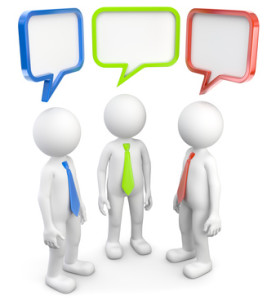For there to be efficient teamwork, communication has to be at its best. A team is able to work well together through good communication. If communication between team members is poor, there is likely to unnecessary tension and anxiety. This is one of the most important reasons why businesses should encourage their employees to clearly communicate with one another when working together.

When a team is able to communicate well, it saves time that may have otherwise been lost to misinterpretation. A breakdown in team communication can be very detrimental leading to taking of incorrect actions. The downside of this is that the team has to stop to address the problem before carrying on. When correct messages are sent and received through and effective team communication network, proper actions can be taken and tasks completed on or even ahead of schedule.
It is important for a team to keep up with changes in the working environment as the business world is constantly changing. Effective team communication enables team members to keep up with the changes as information is shared efficiently. Each member of the team is well informed of any changes in time to make necessary adjustments.
Benefits Of Good Communacation In A Team
In the presence of an effective communication network, team members feel important and confident that their opinions count. This is a great source of motivation and satisfaction that encourages team members to continue adding input for the achievement of joint objectives. In the long run, the team is able to utilize all its resources to complete tasks and projects.
An efficient communication system brings together people from different backgrounds with varying ideologies. This creates understanding among teammates for the greater good. The diversity is easily converted into an advantage based on mutual understanding that facilitates progress. Eventually, the entire network is able to benefit from synergy.
Effective teams need to work together towards the achievement of organizational objectives. A team leader will need to work with the team so as to establish ground rules on how to bring the team together. This is an essential step of helping the team build relationships and work together. When communication skills are strong, there are higher chances that good ideas and best practices will be openly shared among team members. Teams that establish a supportive environment among them are in a better position to learn from the best practices of the group.
